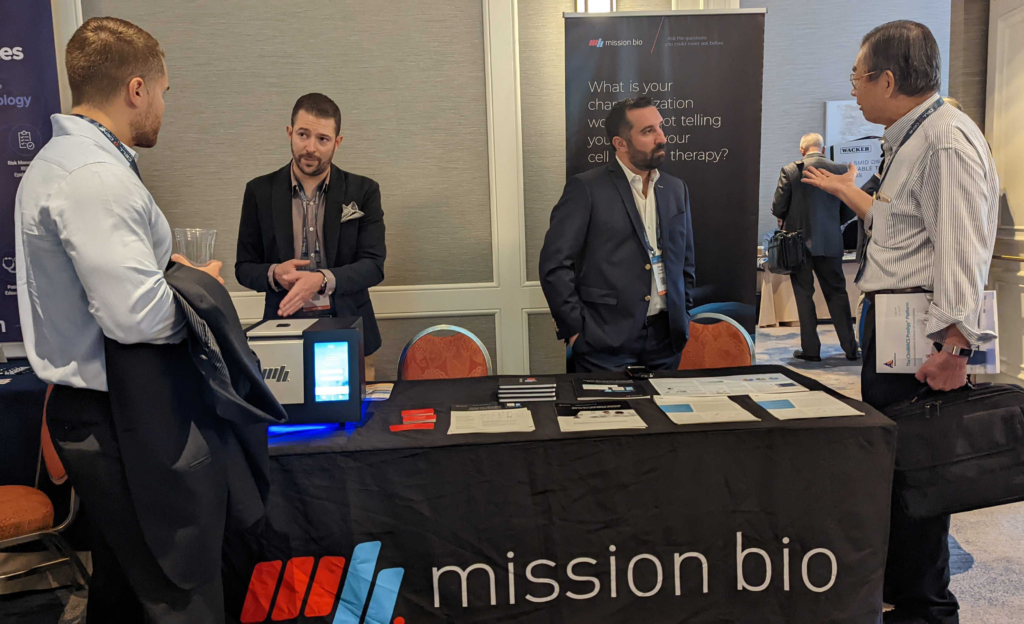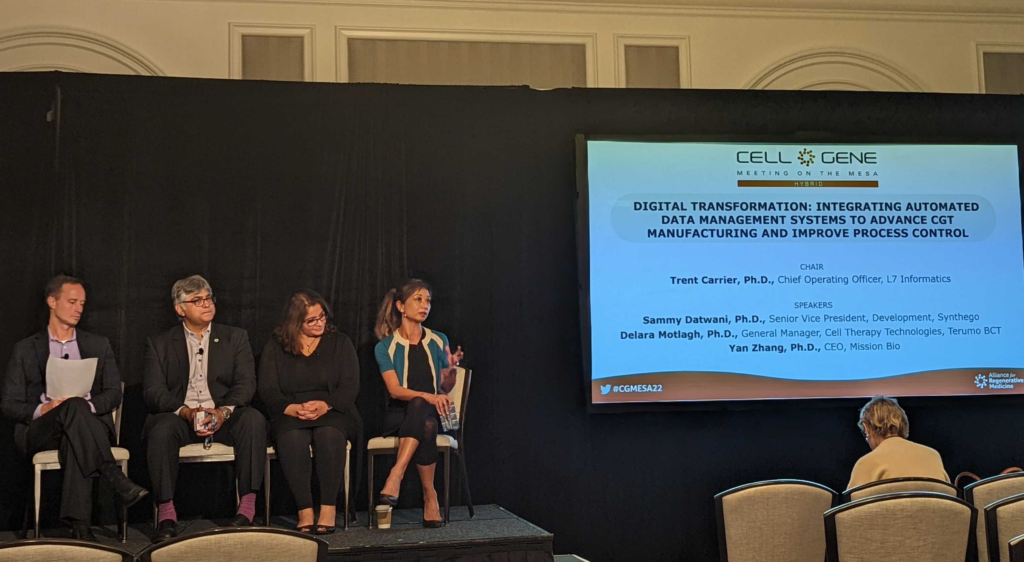In its biggest year ever, Cell & Gene Meeting on the Mesa (Oct 11-13, 2022) brought out over 2,000 drug developers, business executives, clinicians, and scientists to Carlsbad, California. While the event was a hybrid format, the packed meeting rooms, buzzing partnering rooms, and exhibition hall traffic energized the 3-day event. In-person conferences are back and bigger than ever!
Each year, the Alliance for Regenerative Medicine (ARM) organizes the Meeting on the Mesa conference to bring together top decision-makers and cutting-edge researchers within the field of cell and gene therapy development to share and discuss topics with the aim of advancing their programs toward definitive cures for challenging-to-treat diseases, such as cancer and rare genetic disease. Topics range from clinical trial design, drug scale-up and supply chain, and regulatory considerations.

A Global Community Must Converge
Keynote speaker Peter Marks, M.D., Ph.D., Director, Center for Biologics Evaluation and Research (U.S. Food and Drug Administration), delivered a compelling talk, “Taking Cell and Gene Therapy to the Next Level.” Dr. Marks laid out a hopeful vision for cell and gene therapy as a field, but that it will require overcoming specific barriers. Rare and genetic diseases are unique in that there may be only a handful of patients that harbor a specific mutation— and therefore there is too low of a population within a country for drug developers to support and develop a commercially viable drug product to treat the disease. As a solution, Dr. Marks presented the concept of “global regulatory convergence,” such that countries can unite in these disease populations to reach a critical mass required for the commercial viability of a drug. Further, the availability of a globally-developed general regulatory framework could expedite patient access, as well as standardize the regulatory process and requirements worldwide. It is clear from Dr. Marks’ talk that to be successful as a field, cell and gene therapy developers must participate in this global community and collaboration.
Standardization is Critical, But Remains a Challenge
Throughout the conference, the importance of standardization was a recurring topic, but nonetheless is challenging when dealing with bespoke therapeutics like cell and gene therapies. Mission Bio CEO, Yan Zhang, sat on a very engaging panel alongside Sammy Datwani, Senior Vice President, Development (Synthego), Delara Motlagh, General Manager, Cell Therapy Technologies (Terumo BCT), and chair Trent Carrier, Chief Operating Officer (L7 Informatics), titled “Digital Transformation: Integrating Automated Data Management Systems to Avance CGT Manufacturing and Improve Process Control”. The key issue that Dr. Carrier presented was that “due to manufacturing variation with CGTs, often process variability is outside traditional analytical control ranges. We can’t pre-define everything, so the data becomes the product – so how do you characterize the data and cells?” The panel emphasized the importance of choosing tools that can “talk to one another” so that data can be tracked and accessed. Additionally, CGT developers must adopt better tools and platforms that can standardize how we manufacture and characterize drug products, and the emphasis on standardization “can accelerate development, if we focus on it,” said Dr. Zhang.

Dr. Zhang also delivered a rousing talk presenting the current challenges in CGT characterization, and how Mission Bio is devoted to enabling the community in this pursuit through our single-cell multi-omics platform, but also providing support through our deep partnerships and CGT community involvement.
Patients are Waiting
The last day of the meeting brought the opportunity to hear from 18-year-old Aaron Owens who has recessive dystrophic epidermolysis bullosa and serves as a patient advocate. This challenging genetic disease causes the skin to be very fragile and to blister easily, among other ailments. As Aaron explained, it is also referred to as “butterfly skin” disease because children born with it have “skin as fragile as a butterfly’s wings.” He is currently receiving a gene therapy for his condition, which he described as being first unsure about, but realized was helping after about a month of treatment on his skin. This was Aaron’s first opportunity to speak in front of drug developers, and while he considers his medical journey an easier one to navigate, he pointed out that many more individuals have the disease worldwide, and that their access to therapy and medical care is not readily available or clear. Aaron even describes posting videos to TikTok and the patient group on Facebook as the main way to share helpful tips, from applying bandages, to seeking insurance advice. Aaron’s candidness and braveness to speak were a stark reminder of how cell and gene therapy holds such immense potential, but there is still much work to be done.
We hope to “meet you on the mesa” next year!










